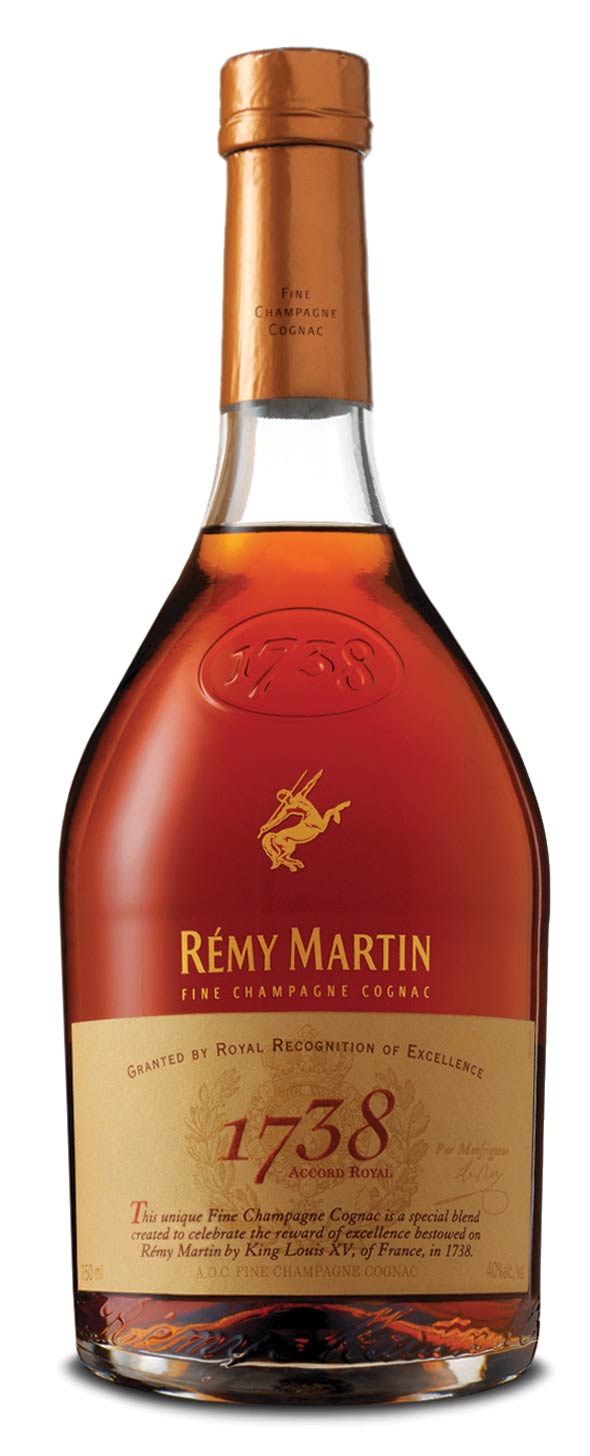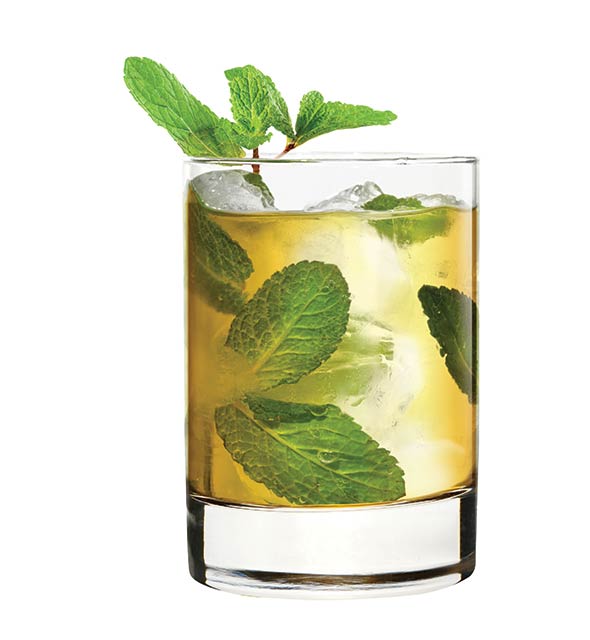
Cognac might be the most misunderstood spirit. It’s appeal, rooted in history, implies some degree of Francophilia, along with a highly sophisticated palette. Undoubtedly, it’s an area of intense connoisseurship. To that end, many of the world’s most rare and costly liquors are aged cognacs. There’s no doubt that stereotypes cling to cognac like socks in the laundry. From hip hop to cigars, the uninitiated seem to perceive cognac as reserved for aficionados or aspirationals. Rebuffing that notion, Rémy Martin 1738 Accord Royal is both approachable and meticulous.
Crafted in the esteemed Rémy tradition, as a blend of 300 eaux-de-vie, the result is not exclusively for advanced drinkers. Even so, the Accord Royal was intended to be an intermediate cognac. It’s a cognac which embraces the idea that the category should not be intimidating but should still offer an exceptional blend. In contrast, the company’s top-end Louis XIII contains 1,200 eaux-de-vie, exclusively from Grande Champagne, some of which are aged 100 years. Further expressing its unique character, Louis XIII is bottled in a hand-crafted, Baccarat crystal decanter.
Simply put, cognac is a brandy, originating from a specific region in France. The relation is similar to how the sub-category of sparkling wines which qualify as champagne are qualified by geography. Of the six regions for brandy, Grande Champagne and Petite Champagne are the two most desirable. Rémy Martin 1738 Accord Royal is a blend of 65% Grande Champagne and 35% Petite Champagne. These regions are unrelated to the Champagne regions near Rheims. The category designation is overseen and certified by a French government agency, the Appellation d’Origine Contrôlée (AOC), which translates to “controlled designation of origin.”
In many ways, brandy’s niche falls squarely between wine and whisky. Like wine, brandy is distilled from grapes. This contrasts with whisky, which is fermented from grains such as corn, rye, barley, or wheat. Like whisky, when a cognac is left to age inside wood barrels, its alcohol and water content will evaporate. As the water evaporates more quickly, the alcohol concentration increases. So over two to five years, a cognac can mature to its 80 proof target. Oak barrels will contribute to flavor for many decades. Hence, aged cognacs are most desirable, usually offering more complexity and depth of flavor. Each individual, double distilled brandy is an eaux-de-vie. But for most, the final product is typically a blend from many eaux-de-vie. A primary challenge for the cellar master is to ensure these blends offer a consistent flavor over long periods of time. The current cellar master, Pierrette Trichet, is only the fourth in the company’s history.
One of Trichet’s most famous contributions was the discovery of a so-called “Rare Cask” of Louis XIII in 2004. This cognac ranked among Rémy Martin’s most exclusive and expensive bottles. Due to an unknown anomaly in the maturation process, the evaporated water and alcohol, also known as the Angel’s Share, resulted in an alcohol content of 43.8% rather than the usual 40%. It also produced flavors outside the usual profile, including truffles, honey, and nuts. Only 786 bottles were available worldwide, with 30 rationed for the US.
Rémy Martin 1738 Accord Royal is flexible cognac, smooth enough to serve neat or on the rocks. And it offers enough flavor complexity to incorporate into many classic cocktails such as Manhattan, Old Fashioned, Sidecar, or Mint Julep. Rémy Martin 1738 Accord Royal also offers a palatable mix for today’s more forward mixologists. Upfront, there’s a flavorful mix of chocolate, cinnamon, and ginger with hints of oak. The deeper complexity comes from notes of exotic fruits, candied orange and, lily of the valley. 1738 Accord Royal derives its name from the year in which Rémy Martin was awarded a royal charter, or Accord Royal, by the King of France, Louis XV. This effectively lifted a ban on planting new vineyards. And while Rémy Martin’s products are now available worldwide, the grapes are still exclusive to the Grande and Petite Champagne crus.
Rémy Martin established the House of Rémy Martin in 1724. Four generations later, Emile Rémy Martin oversaw significant innovations, such as selling by bottle rather than barrel. Even as the House of Rémy Martin has modernized over the years, it remains loyal to the traditional harvesting and distillation processes. And, Rémy Martin remains the largest producer from the Grande Champagne and Petite Champagne regions.
Rémy Martin 1738 Accord Royal was created exclusively for the US market. Part of its aim is to fill a hole in the market for a premium brandy that is suited for cocktails. It works easily into the overwhelming trend for speakeasy-style cocktails. Bars which best represent this direction include The Cedars Social in Dallas; New York’s Rye, Hudson Clearwater, Hotel Delmano, Angel’s Share, Dutch Kills, Hideout, and PDT; The Varnish and The Roger Room in LA; Bourbon & Branch in San Francisco; and Violet Hour in Chicago.
This style of bar looks to re-create cocktail culture with historical accuracy. Often, Prohibition-era influences include unmarked entrances, hidden doors, and passwords. While the décor and retro style are part of the appeal, the real highlight is a devotion to fresh and local ingredients. The bartenders at this type of establishment are under-utilized by basic drink orders. Instead, they push the limits on modern mixology by looking to the past for authentic concoctions, introducing patrons to less-than-obvious additives. Coming from the world’s most esteemed producer of cognac, Rémy Martin 1738 Accord Royal fits perfectly into this type of bar philosophy.
Due to a mellowness and flavor complexity, the true strength of 1738 Accord Royal is its flexibility to stand alone or be incorporated into mixed cocktails. In the end, it’s a blend which celebrates basic tenants of enjoyment and inclusivity.

MINT JULEP
2 oz. 1738® Accord Royal
8 sprigs of mint
½ oz. of Simple Syrup
Put mint and sugar with a dash of water in
mixing glass. Add shaved ice and cognac.
Shake until frosted, and pour into a rocks
glass. Garnish with a mint sprig.
TEXT BY Michael Cohen

